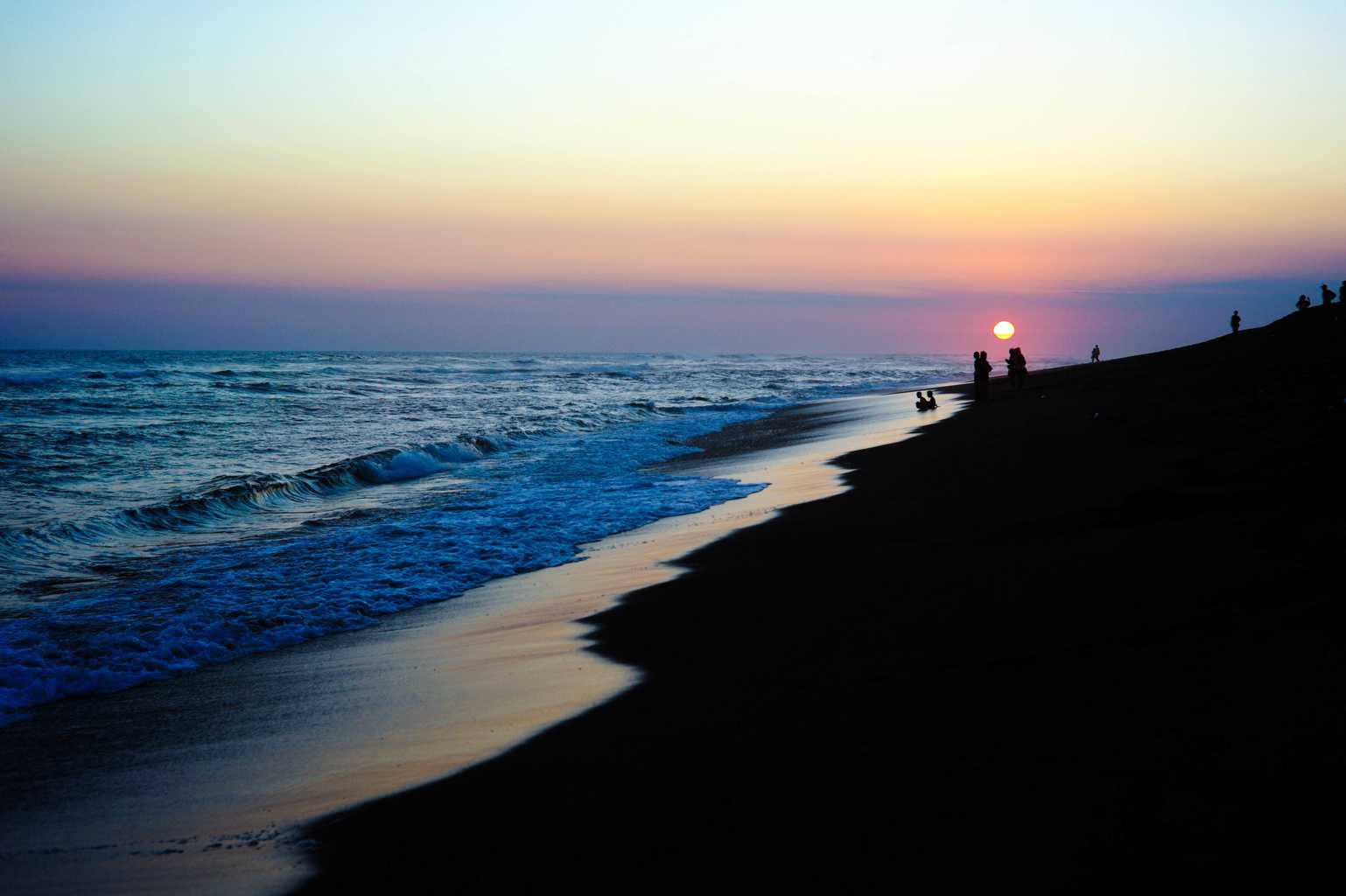Mexico is a country in North America, lying between the United States of America to the north, and Guatemala and Belize to the southeast. Its extensive coastlines include the Gulf of Mexico and the Caribbean Sea to the east and the Pacific Ocean to the west. Mexico has unique cuisine, art, archaeology, pyramids, museums, Haciendas, 6,000 miles of shoreline, superb architecture, snowy mountains in the Sierras, rainy jungles in the southeast and desert in the northwest, many golf courses and excellent fishing. Besides that, Mexico is famous for its food, its culture and world class cities like Mexico City. The once poor nation has experienced significant economic growth in the last decades, leading to better services and facilities all around.
Archaeological Sites
- Chichen Itza – Majestic Mayan city, declared a UNESCO World Heritage Site in 1988 and recently voted as one of the New Seven Wonders of the World.
- Ek Balam – Recently reconstructed Mayan site, famous for its unique decorated stucco and stone carved temples that you can climb.
- El Tajín – In the state of Veracruz near the town of Papantla. A UNESCO World Heritage Site.
- Plazuelas and Peralta – In the state of Guanajuato, two sites making part of the “Tradición él Bajío”.
- Monte Alban – In the state of Oaxaca, a Zapotec site dating from about 500 B.C. A UNESCO World Heritage Site.
- Palenque – Mayan city in the state of Chiapas, Palenque famous for its elaborate paintings. Also well known for having the largest tract of rainforest in Mexico located in the same area.
- Teotihuacan – In the state of Mexico, near Mexico City. Enormous site with several large pyramids.
- Tulum – Mayan coastal city with spectacular Caribbean vistas. Dates from late Mayan period.
- Uxmal – Impressive Mayan city-state in the Puc Region, declared a UNESCO World Heritage Site in 1996.
Understand
Mexico is one of the most popular tourist countries in Latin America. Much of the tourist industry is centered around the beach resorts as well as the altiplano in the central part of the country. Visiting the northern interior allows visitors to get off the beaten path a bit. U.S. American tourists tend to predominate on the Baja California peninsula and the more modernized beach resorts (Cancún, Puerto Vallarta), while European tourists congregate around the smaller resort areas in the south like Playa del Carmen and colonial towns of San Cristobal de las Casas.
Climate
Mexico uses the metric system for all measurements. All weather forecasts are in Celsius (°C).
Varies from desert-like regions on the northwest part of the country (cities like Hermosillo, Ciudad Juárez, or Los Cabos); and temperate in the northeastern part (cities like Monterrey, Nuevo Laredo, Ciudad Acuña), but note that much of the northern Mexican territory gets rather cold during the winter with average day time highs from 8°C (39F) to 12°C (59F), overnight lows average around -4°C (24F) and snow is sometimes frequent in certain northern places like (the Sierra Madre of Chihuahua, Durango, Coahuila, Nuevo León, and northern Tamaulipas) but can also occur at higher altitudes in the temperate forests in the central part of Mexico. Also, northern Mexico gets very hot during the summer with sudden violent storms in the afternoon, with heavy rain and hail, also an isolated tornado can occur with these storms but rarely, and the temperatures during the day can quickly exceed 39°C (100F). The Bajío region is semiarid (cities like Aguascalientes, León and Zacatecas); and temperate forests in the central part of the country (Mexico City, Toluca), and tropical rain forests in the south and southeast regions like (Chiapas, Cancún). The region stretching from Guadalajara to Morelia enjoys what many consider one of the best climates in the world, with daily high temps in the high 70s and 80s (21°C to 26°C) year round. Hurricanes can be common in the coastal cities especially those near the Caribbean Sea and the Gulf of Mexico.
Travel by plane
From the United States and Canada
There are hundreds of daily flights linking Mexico to cities large and small throughout North America. This includes legacy carriers such as Air Canada, American Airlines, Delta, etc… as well as discount airlines such as JetBlue, Spirit, WestJet, and Southwest Airlines. Also to be considered is the Mexican discount carrier Volaris, which currently operates from several major US cities (including Chicago, Denver, Las Vegas, Oakland, and Orlando) through their hubs in Mexico City and Guadalajara.
Note that as with both the United States and Canada, you will have to clear immigration and customs at your first Mexican port of entry, even though that airport may not be your final destination. (For example, many trips on Aeromexico will involve connecting through its Mexico City hub.) You will then have to re-check your bags and possibly go through security again to proceed to your next flight segment.
Visa and other entrance requirements
Citizens of the United States are required to have a passport to travel into Mexico.
By plane
Mexico is a large country and the low-cost revolution that started in 2005 means that fares are often ridiculously cheap if you book in advance. Note that now with the increases in fuel charges the bargain days are mostly gone and the airlines have had to raise prices to survive the recent recession. But, there are bargains to be found.
The main full-service airlines, in addition to the major US carriers, are Aeromar, AeroMexico and AeroMexico Connect (formerly Aerolitoral). The rapidly changing palette of low-cost carriers includes InterJet, Volaris and Viva Aerobus . Always check the individual carrier’s website to see just where they fly at this point. As everywhere, the business of aviation is very much in flux.
Currency
The currency of Mexico is the peso (MXN), divided into 100 centavos.
Coins are issued in 5, 10 (steel), 20, 50 centavo (brass; new 50-centavo coins issued from 2011 on are steel and smaller in size) and 1, 2, 5 (steel ring, brass center), 10, 20, 50, and 100 peso (brass ring, steel or silver center) denominations, but it’s extremely rare to find coins valued at more than 10 pesos.
Banknotes are produced in MXN20 (blue), 50 (pink-red), 100 (red), 200 (green), 500 (brown), and 1000 (purple and pink for the latest issue, purple for older issues) denominations. The most recent MXN20, MXN50 and MXN100 bills are made from polymer plastic, and there are several different series of all banknotes. Ten-peso notes exist, but are very rare and no longer issued and accepted.
“Old” pesos (issued before 1993) are no longer accepted, but are usually collected by numismatists.
The symbol used for pesos locally is the same as for US dollars ($), which can be slightly confusing. Prices in dollars (in tourist areas) are labeled “US$” or sport an S with a double stroke. As of June 2015, the exchange rate hovered around MXN15 to USD1. As this exchange rate has typically hovered around MXN13 to USD1, vendors and merchants will often use this rate of exchange. Thus, it is currently better to purchase with pesos. US dollars are widely accepted in the far north and in tourist locales elsewhere.
Things To Do
- Surfing – Baja California, Vallarta, Oaxaca
- Sea Kayaking – Baja California
- Snorkeling – Baja California, Cancun, Cozumel, Isla Mujeres, etc.
- Scuba diving – Baja California, Cancun, Cozumel, Isla Mujeres, Acapulco, Cabo San Lucas etc., and cave diving in the cenotes of the Yucatán peninsula.
- Whale Watching – Baja California, Guerrero Negro, Mazunte, Zipolite
- White Water Rafting – Veracruz
- Visit a Volcano – Mexico, Toluca etc.
- Take a ride on the Copper Canyon Railway
- Enjoy the beautiful coast line and beaches of Oaxaca – Huatulco, Mazunte, Zipolite, Puerto Angel, Puerto Escondido, etc.
- Go for a horseback ride in the Barrancas de Chihuahua
- Visit the archaeological sites – Chichen Itza, Tulum, Coba, Monte Alban, Calakmul, Palenque, etc.
- Visit ecological parks – Mayan Riviera
- Trekking and viewing cave paintings in Baja California – Guerrero Negro
- Sea turtle Museum Mazunte
Mexico. (2015, August 25). Wikivoyage, Free travel information around the globe. Retrieved 23:17, September 12, 2015 fromhttps://en.wikivoyage.org/w/index.php?title=Mexico&oldid=2844368.





0 Comments